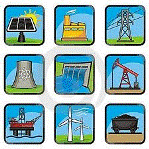Department of Agricultural Economics: Undergraduate Research
Date of this Version
Fall 12-18-2018
Document Type
Article
Citation
Op-Ed from ENSC 230. Energy and the Environment: Economics and Policy, University of Nebraska-Lincoln, Department of Agricultural Economics, Fall 2018
Abstract
There was a time in history that America led the world in recycling. In World War Two, Americans were asked to recycle tin, steel, paper, and rubber for the war effort. The University of Southern Carolina states that children were so eager to participate, they went door to door collecting recyclable scraps to turn in to be made into tanks, planes, and ammunition. Yet, in 2017 the National Geographic estimated about 91% of plastic produced globally has not been recycled and instead is landfilled or littered into the environment. America is no longer leading the recycling charge, the World Economic Forum estimates that the US ranks near the bottom in recycling rates. Partially to blame for global trends is the wide variety of plastic polymers used, many of them indistinguishable from others to the average consumer, which makes recycling challenging. This has resulted in natural environments choking on waste many animals mistake for food, and landfills full of plastic waste that will not degrade until every living person on Earth is long dead. Advanced energy recovery has the potential to mitigate this issue by processing plastics that cannot be recycled conventionally.
Weak domestic demand for recycled plastics was mitigated for years by shipping waste overseas to China for processing and resale. But starting in January 2018, China changed import policies to accept no more than .5% contamination. This has caused global demand for plastic waste to decrease to a fraction of what it once was. These new standards have increased costs for recyclers significantly and done little to address demand shortfalls. Recyclers are forced to raise prices for recycling services to cover the difference and keep their operation profitable. Nancy Hicks points out in a Lincoln Journal Star article that local recyclers have already started raising fees to consumers.
The status quo fails to prevent plastic waste from entering the environment by not properly rewarding recycling, it to sicken animals ranging from birds to fish to whales. These animals mistake plastic for food and eat it, but are unable to digest it. This plastic sits in their stomachs and takes up space, causing animals to think they’re full when in reality they’re starving. These effects seem far away, but they are impacting us now. Increased plastic in the oceans has combined with overexploitation to reduce fish populations, harming millions of people who rely on the ocean for work, food, or both. To make matters worse, Scientific American reports that microscopic bits of plastic have been found in the blood of mussels destined for human consumption. This is important because it means that plastic waste is not confined to the gut of animals that ingest it. It may have already found its way into the primary protein source for hundreds of millions of people. Because the effects of microplastics on human health are not well documented, their spread into human food products may prove a significant challenge to food safety worldwide.
The growing amount of plastic waste that finds its way into the environment and subsequently into our bodies is an externality that the current cost of plastic does not include. Advanced Waste-to-Energy methods such as plasma gasification have the potential to lessen this externality by diverting waste from incinerators and landfills. The main advantage of this method is it can diminish this externality without forcing major behavior change in individuals. Existing sorting facilities can remove high value plastics (#1 and #2 mostly) for conventional recycling and send everything else to energy recovery. Currently the lower value plastics are sold at a loss or landfilled despite the best efforts of the people that set them in the recycling bin.
The biggest risk for this new technology is it being perceived as a risky investment. High capital costs make other investments more attractive in the private sector, leaving the public sector to take on the risk. This could be mitigated by regulations banning plastic from landfills, which would make energy recovery the least costly disposal method for waste plastic.
Advanced Waste-to-Energy may hold the key to preserving the increase in quality of life brought to us by the explosion of global plastic use while simultaneously reducing the negative consequences of its’ long degradation time and widespread adoption. The technology may actually make direct costs of recycling to consumers smaller because it increases the value of post-consumer material, making recycling operations more profitable.
Included in
Environmental Indicators and Impact Assessment Commons, Natural Resources and Conservation Commons, Oil, Gas, and Energy Commons, Other Environmental Sciences Commons

